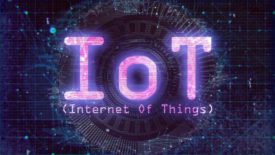Home » IoT Security
Articles Tagged with ''IoT Security''
Exploring the Wide-Ranging IoT Risks in Healthcare
While impacts may vary, risk mitigation strategies work in all domains.
March 13, 2018
Identifying Key Internet of Things Partners
Part 3 in a 3-Part Series on the Internet of Things
September 26, 2017
The Benefits of Autonomous Buildings
Part 2 in a 3-Part Series on the Internet of Things
September 12, 2017
Understanding the Internet of Things
Part 1 in a 3-Part Series about the Internet of Things
August 29, 2017
Sign-up to receive top management & result-driven techniques in the industry.
Join over 20,000+ industry leaders who receive our premium content.
SIGN UP TODAY!Copyright ©2024. All Rights Reserved BNP Media.
Design, CMS, Hosting & Web Development :: ePublishing








